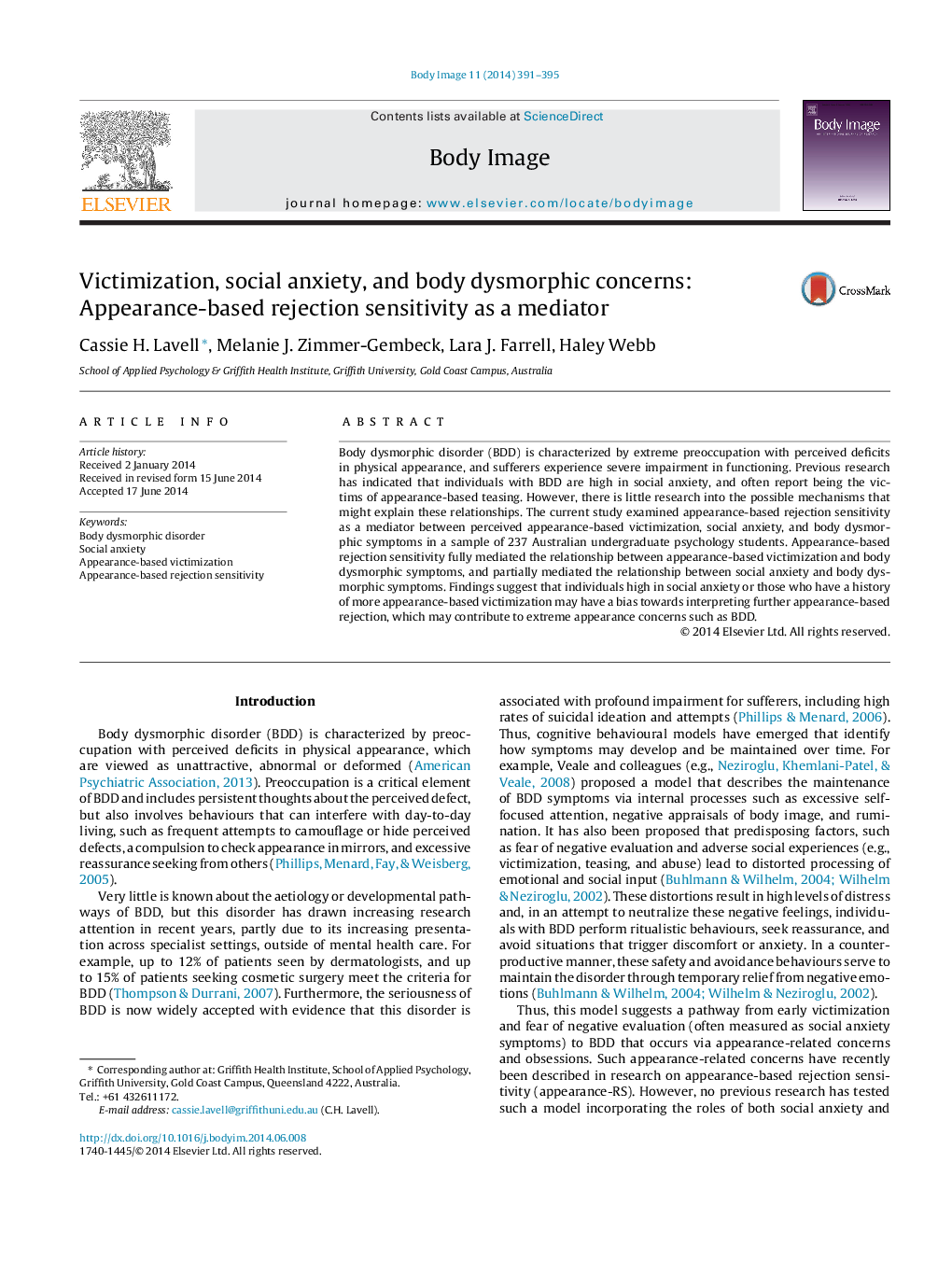| Article ID | Journal | Published Year | Pages | File Type |
|---|---|---|---|---|
| 902820 | Body Image | 2014 | 5 Pages |
•Body dysmorphic symptoms were assessed in university undergraduates.•Appearance-based victimization and social anxiety predicted symptoms.•Appearance-based rejection sensitivity (appearance-RS) was examined as a mediator.•Appearance-RS fully mediated victimization and body dysmorphic symptoms.•Appearance-RS partially mediated social anxiety and body dysmorphic symptoms.
Body dysmorphic disorder (BDD) is characterized by extreme preoccupation with perceived deficits in physical appearance, and sufferers experience severe impairment in functioning. Previous research has indicated that individuals with BDD are high in social anxiety, and often report being the victims of appearance-based teasing. However, there is little research into the possible mechanisms that might explain these relationships. The current study examined appearance-based rejection sensitivity as a mediator between perceived appearance-based victimization, social anxiety, and body dysmorphic symptoms in a sample of 237 Australian undergraduate psychology students. Appearance-based rejection sensitivity fully mediated the relationship between appearance-based victimization and body dysmorphic symptoms, and partially mediated the relationship between social anxiety and body dysmorphic symptoms. Findings suggest that individuals high in social anxiety or those who have a history of more appearance-based victimization may have a bias towards interpreting further appearance-based rejection, which may contribute to extreme appearance concerns such as BDD.
